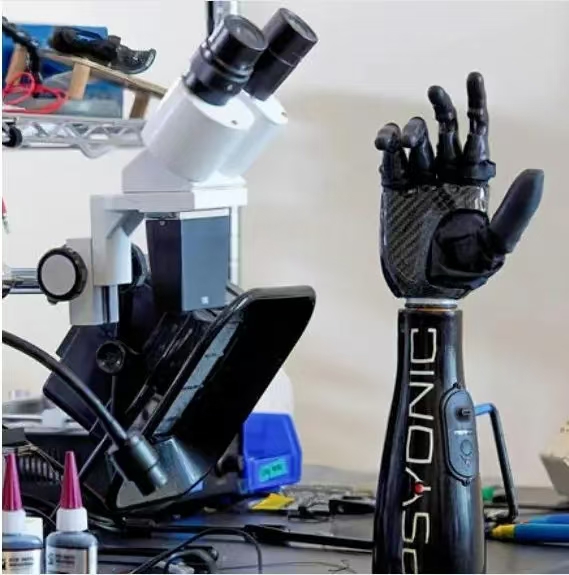
Italian pizza on September 11, the world’s first magnetic-controlled prosthetic hand, it allows amputees to replicate all actions and control the force applied when grabbing fragile objects just by thinking.
No wires, no electrical connections, only magnets and muscles to control finger movements and make daily activities possible, such as opening cans, using screwdrivers, picking up coins.
A research team at the Scuola Superiore Sant’Anna in Pisa developed a new interface between the residual arm of amputees and a mechanical hand to decode motion intentions. The system involves implanting small magnets in the muscles of the forearm.
The implant integrated with the Mia-Hand mechanical hand developed by the spin-off company Prensilia was successfully tested on the first patient, a 34-year-old Italian named Daniel, who used the prosthesis for six weeks.
The results of the experiment were published in the scientific journal “Science Robotics,” representing an important step forward for the future of prostheses. This is the world’s first prosthetic hand with magnetic control, allowing amputees to replicate all actions just by thinking, and control the force applied when grabbing fragile objects. Daily activities such as opening cans, using screwdrivers, picking up coins, among others, can be performed without wires and electrical connections, relying only on magnets and muscles to control finger movements.
Under the coordination of Professor Christian Cipriani, the team developed a novel interface between the residual arm of amputees and a mechanical hand for decoding motion intentions. The idea of the new interface is to implant small magnets into the residual muscles of the arm amputees, to control the opening and closing of the fingers using the movements generated by muscle contractions. The forearm has 20 muscles that control hand movement, and many people who have lost their hand can still feel its presence; residual muscles move according to brain commands, and the research team maps these movements into signals to guide the mechanical hand fingers.
The natural magnetic field of the magnets can be easily located in space, and when the muscles contract, the magnets move, and a special algorithm converts these changes into specific commands for the mechanical hand.
In September 2022, Daniel lost his left hand, and in April 2023, he underwent surgery to implant six magnets in his arm. The surgery was performed at the Azienda Ospedaliero-Universitaria Pisana (AOUP), thanks to the collaboration of Dr. Lorenzo Andreani, Dr. Manuela Nicastro, and Dr. Carmelo Chisari.
One of the key factors for the success of the surgery was the careful selection of patients according to strict criteria, with precise selection of the residual muscles in the amputee area through preoperative MRI imaging and electromyography. However, due to scar formation and fibrosis, adaptation during surgery was necessary based on the actual condition of the tissue.
To facilitate the connection between the implanted magnets in the residual arm and the mechanical hand, the team created a carbon fiber prosthesis socket containing an electronic system to position the movement of magnets. The experimental results far exceeded expectations; Daniel could control finger movements, pick up and move objects of different shapes, perform daily activities, and control force.
Daniel expressed that this system allowed him to recover lost sensations and emotions. Assistant Professor Marta Gherardini, the first author of the study, stated that working with Daniel made them realize that many things can be done to improve life. Prof. Cipriani concluded that they are ready to expand these results to a wider range of amputee surgeries, and work on the new implants is underway with funding from European and national sources.


